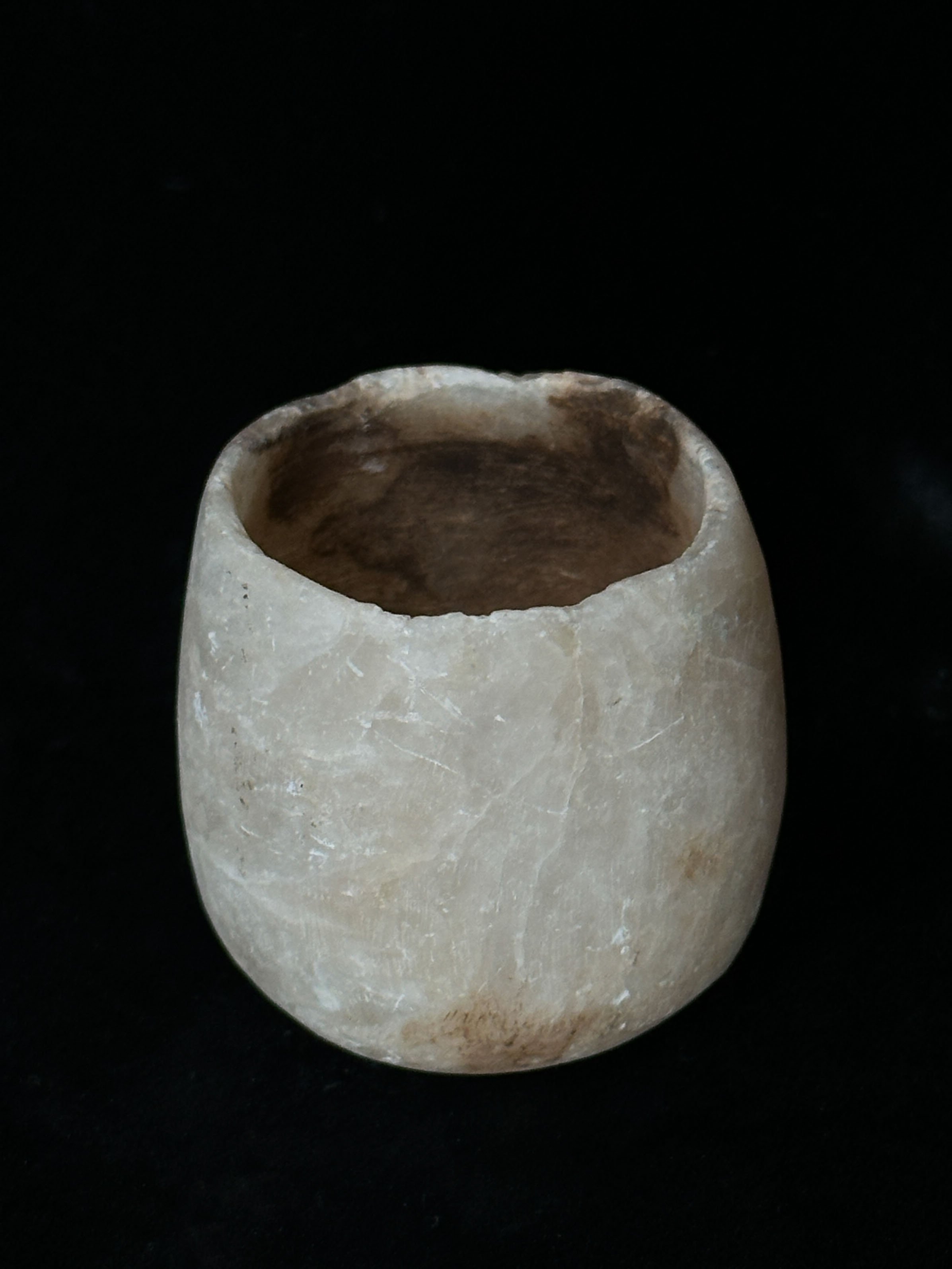 Image 1 of 7
Image 1 of 7

 Image 2 of 7
Image 2 of 7

 Image 3 of 7
Image 3 of 7

 Image 4 of 7
Image 4 of 7

 Image 5 of 7
Image 5 of 7

 Image 6 of 7
Image 6 of 7

 Image 7 of 7
Image 7 of 7








UNEARTHED Ancient Egyptian Alabaster Vessel
Egypt, Old–New Kingdom (ca. 2686–1069 BCE)
Carved from soft, veined calcite—known as Egyptian alabaster—this small vessel was likely used to hold kohl, unguents, or sacred oils. Its size and inward curve suggest a function tied to daily rituals of care or preparation for the afterlife.
The interior bears discoloration from use, while the rim shows a single fracture softened by time. It may have once rested among a burial assemblage, placed there to accompany the soul beyond this life, or lived on a domestic shelf, handled often and with intention.
These vessels were carved by hand and valued for their material: a stone associated with purity, protection, and light. The form endures not as an ornament, but as a memory—a tender fragment of life and gesture, thousands of years removed.
Please handle with care, as this piece is around 3000 years old.
Measurements: 1.5×2” / 5×5cm
Egypt, Old–New Kingdom (ca. 2686–1069 BCE)
Carved from soft, veined calcite—known as Egyptian alabaster—this small vessel was likely used to hold kohl, unguents, or sacred oils. Its size and inward curve suggest a function tied to daily rituals of care or preparation for the afterlife.
The interior bears discoloration from use, while the rim shows a single fracture softened by time. It may have once rested among a burial assemblage, placed there to accompany the soul beyond this life, or lived on a domestic shelf, handled often and with intention.
These vessels were carved by hand and valued for their material: a stone associated with purity, protection, and light. The form endures not as an ornament, but as a memory—a tender fragment of life and gesture, thousands of years removed.
Please handle with care, as this piece is around 3000 years old.
Measurements: 1.5×2” / 5×5cm
Egypt, Old–New Kingdom (ca. 2686–1069 BCE)
Carved from soft, veined calcite—known as Egyptian alabaster—this small vessel was likely used to hold kohl, unguents, or sacred oils. Its size and inward curve suggest a function tied to daily rituals of care or preparation for the afterlife.
The interior bears discoloration from use, while the rim shows a single fracture softened by time. It may have once rested among a burial assemblage, placed there to accompany the soul beyond this life, or lived on a domestic shelf, handled often and with intention.
These vessels were carved by hand and valued for their material: a stone associated with purity, protection, and light. The form endures not as an ornament, but as a memory—a tender fragment of life and gesture, thousands of years removed.
Please handle with care, as this piece is around 3000 years old.
Measurements: 1.5×2” / 5×5cm

